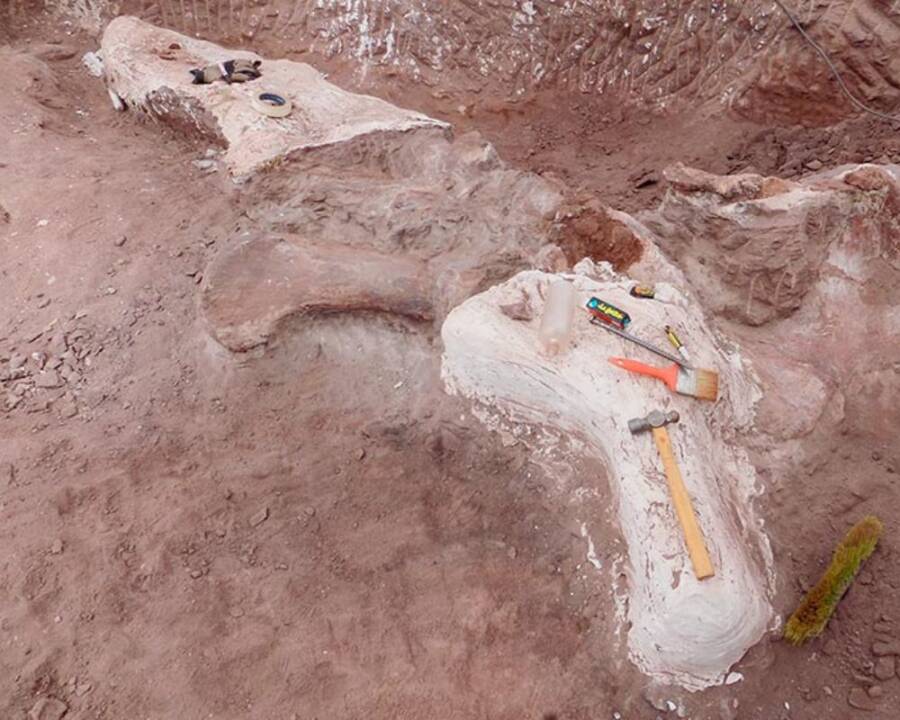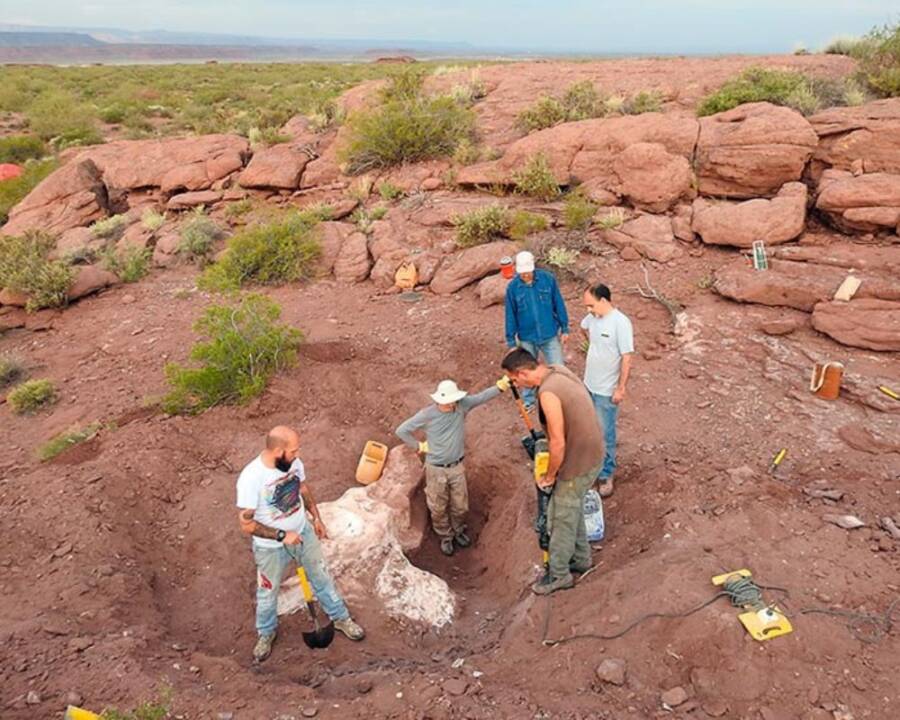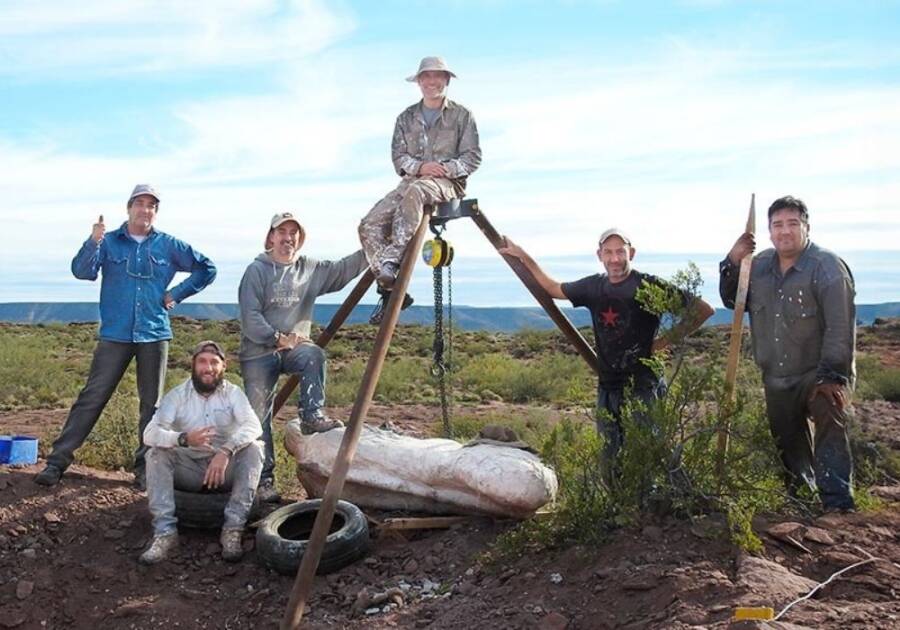After a chance oil discovery in 2017, excavations revealed the 95-million-year-old bones of a dinosaur dubbed Astigmasaura genuflexa.

Mattia Yuri Messina/CONICETAn artist’s reconstruction of Astigmasaura genuflexa.
Paleontologists in Argentina’s Patagonia region have discovered a previously unknown species of dinosaur that’s now been named Astigmasaura genuflexa.
It roamed the Earth during the Late Cretaceous period, around 95 million years ago, and measured nearly 60 feet in length, weighing more than 10 tons. The prehistoric herbivore was a member of Rebbachisauridae, a large family of sauropods.
Researchers identified the dinosaur thanks to a fossilized postcranial skeleton. Notably, this also marks the first time a posterior part of a rebbachisaurid dinosaur has been discovered. Both hind limbs, the hip, and the anterior half of the tail were perfectly preserved, providing unique insight into the creature’s anatomy.
The Discovery Of ‘Astigmasaura Genuflexa’ In Argentina

Flavio Bellardini/CONICETThe unearthed fossil of Astigmasaura genuflexa in Argentina’s Patagonia.
The fossilized remains of Astigmasaura genuflexa were discovered by paleontologists at the El Orejano locality in the Neuquén Basin in Patagonia. The identification of the dinosaur was just announced in the scientific journal Cretaceous Research.
According to a press statement from the National Scientific and Technical Research Council (CONICET), the fossil was initially discovered in 2017 after the chance discovery of oil in a nearby field. During the dig, workers came across the articulated skeleton of the dinosaur in the lower levels of the Huincul Formation.

Flavio Bellardini/CONICETPaleontologists at the excavation site in Patagonia working to remove the fossilized bones.
“These sandy and clayey levels, where the fossilized bones were found, corresponded to a section of a meandering river, which had a sinuous or curved, snake-like path, indicating that the remains, carried by a low-energy current, became stranded on one of the many sand bars that formed during its course,” explained Flavio Bellardini, a paleontologist with CONICET.
While the front half of the dinosaur’s remains were eventually swept away by the current and did not fossilize, the back half remained preserved for tens of millions of years until they were unearthed by Bellardini and his team.
The Identification Of A New Dinosaur
Per the press release, the excavation required five paleontological campaigns and more than 30 days of fieldwork.
To break away the rock, the excavation team employed sledgehammers, points, hammers, chisels, rotary hammers, jackhammers and rock cutters. They transported the unearthed fossil with gypsum and burlap sacks and loaded it on a truck using a tripod and winch — no small feat, given that some of the bones weighed more than a ton.
The fossilized remains were then cleaned over the course of several months in a laboratory. In the end, researchers were left with 20 caudal vertebrae, 19 haemal arches, both ischia, pubis, part of the ilium, two femurs, two tibias, two fibulas, two astragali, and both nearly complete feet.

Flavio Bellardini/CONICETThe paleontology team that made the discovery.
Comparing these remains to other dinosaur species allowed the team to identify Astigmasaura genuflexa as a rebbachisaurid sauropod, but some unique morphological features let them know that this species was new to science.
“Astigmasaura genuflexa shares different conditions with other Rebbachisauridae, including anterior caudal vertebrae with tall neural spines and tetraradiate neural laminae, asymmetric middle haemal arches, mediolaterally compressed proximal tibiae, and femur with medially inclined distal condyles,” researchers wrote in the paper.
“Furthermore,” they continued, “Astigmasaura genuflexa shows a unique combination of diagnostic features that distinguish it from all other sauropods.”
Until now, the caudal and pelvic girdle anatomy of Rebbachisauridae was poorly known, but this new fossil has enlightened researchers and “suggests a greater taxonomic diversification within the family during the last stages of its evolutionary history than known before.”
After learning about the newly identified dinosaur Astigmasaura genuflexa, learn about six of the weirdest dinosaurs to ever exist. Then, brush up on your dinosaur knowledge with our collection of 31 dinosaur facts.





